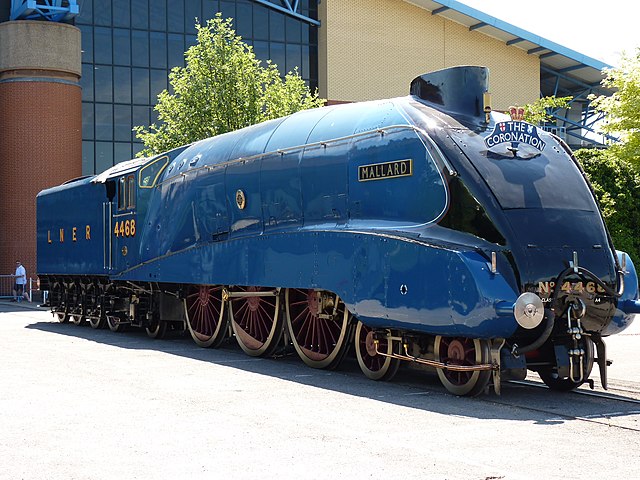Mainline steam trains in Great Britain
Although steam locomotives were withdrawn from normal railway service in Great Britain in 1968, due to sustained public interest including a locomotive preservation movement, steam hauled passenger trains can still be seen on the mainline railway in the present day.
The Royal Duchy train, hauled by Tangmere, along the Dawlish sea wall in 2015
The support crew of Tornado adjust the coal distribution while the tender is refilled with water by hose
Mallard on Knaresborough viaduct in 1987
The Jacobite, hauled by Lord of the Isles, crossing the Glenfinnan Viaduct
A steam locomotive is a locomotive that provides the force to move itself and other vehicles by means of the expansion of steam. It is fuelled by burning combustible material to heat water in the locomotive's boiler to the point where it becomes gaseous and its volume increases 1,700 times. Functionally, it is a steam engine on wheels.
LNER Class A4 4468 Mallard is officially the fastest steam locomotive, reaching 126 mph (203 km/h) on 3 July 1938.
LNER Class A3 4472 Flying Scotsman was the first steam locomotive to officially reach 100 mph (160 km/h), on 30 November 1934.
The Salamanca locomotive
The Locomotion at Darlington Railway Centre and Museum








